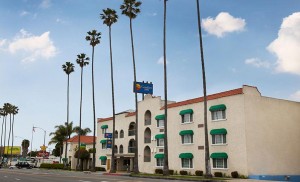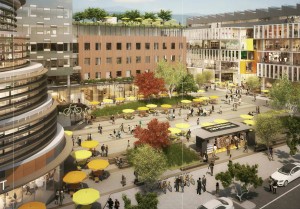With the opening of the Expo Line to Santa Monica later this week, KPCC radio is giving this momentous occasion some comprehensive coverage. Transportation reporter Meghan McCarty interviewed me and others about the significance — and potential challenges — of the line. Here is an excerpt:
Elkind said the county needs to brings more people closer to the train line.
“The best thing you can do is put affordable housing – that type of investment is really critical to create that type of thriving, compact neighborhood,” he said.
More buildings could be a tough sell on the Westside, where development is a hot button issue. Both in Santa Monica and Los Angeles, voter-led efforts to limit new buildings have drawn tens of thousands of signatures in support. Fears of increased traffic and loss of neighborhood character have driven the anti-development sentiment.
I’ll have more thoughts on both the upsides and areas of concern for the new line soon.
An unfortunate vote last week by the Santa Monica City Council will keep major boulevards in the desirable coastal city from being redeveloped, underscoring the anti-housing policies in coastal California that is driving up rents and home prices.
Wilshire and Santa Monica Boulevards in Santa Monica are major transit thoroughfares but feature many low-rise, single story buildings. Back in 2010, the city developed a plan to encourage multi-story housing in corridors like these. But with last week’s vote, which will affect an ordinance to be voted on in a few weeks, those kind of projects will be almost impossible to build under the city’s approval process.

This hotel is likely to be the densest housing built on Santa Monica Boulevard for the foreseeable future
Why does this matter? Because coastal cities like Santa Monica in California have not been doing their fair share to build housing, leading to hugely expensive housing costs and exacerbating inequality for those who can’t afford to live on the coast.
Not to mention that Santa Monica is about to open the multi-billion dollar Expo light rail line, subsidized by the region’s taxpayers, which requires more residents and workers around the station areas to be cost-effective.
Coupled with the city’s rejection of a major office and housing complex by a future Expo Line station, and my former home is sadly becoming a NIMBY poster child.
A major commercial and housing center, proposed for a future rail transit station in Santa Monica, was killed last night by the Santa Monica City Council. The Council had previously approved the project by one vote, but Councilmember Gleam Davis switched her vote to oppose.
Affluent residents of the seaside town (my former home for eight years) organized a citizens petition to stop the development, getting more than ten percent of the registered voters to sign.
Even without this vote, the citizen drive was likely to be successful, and if not, the homeowners group had hired attorneys to litigate the project to death. But the city council vote is surely disappointing to those who would like to see Santa Monica, and greater Los Angeles, channel growth around the rail network. Santa Monica residents are benefiting from a multi-billion dollar rail investment but refuse to allow new residents and workers to take advantage of that system.The fight is another example of how wealthy and sophisticated homeowner groups can prevent these sensible projects. They hired attorneys, formulated political and legal strategies to oppose the project, and enlisted rival businesses and wealthy residents to fund a petition drive.
What’s next? The developers will go back to the drawing board, reoccupy the site, or build according to the limited existing zoning. But far worse is the potential chilling effect this could have on development opportunities around rail transit throughout the region. Why would developers want to gamble their money on transit-oriented projects with this much uncertainty and neighbor opposition? The result will be more sprawl and traffic as development is pushed out to the hinterlands.
It all reminds me of this scene from The Big Lebowski (just substitute Santa Monica for Malibu):



